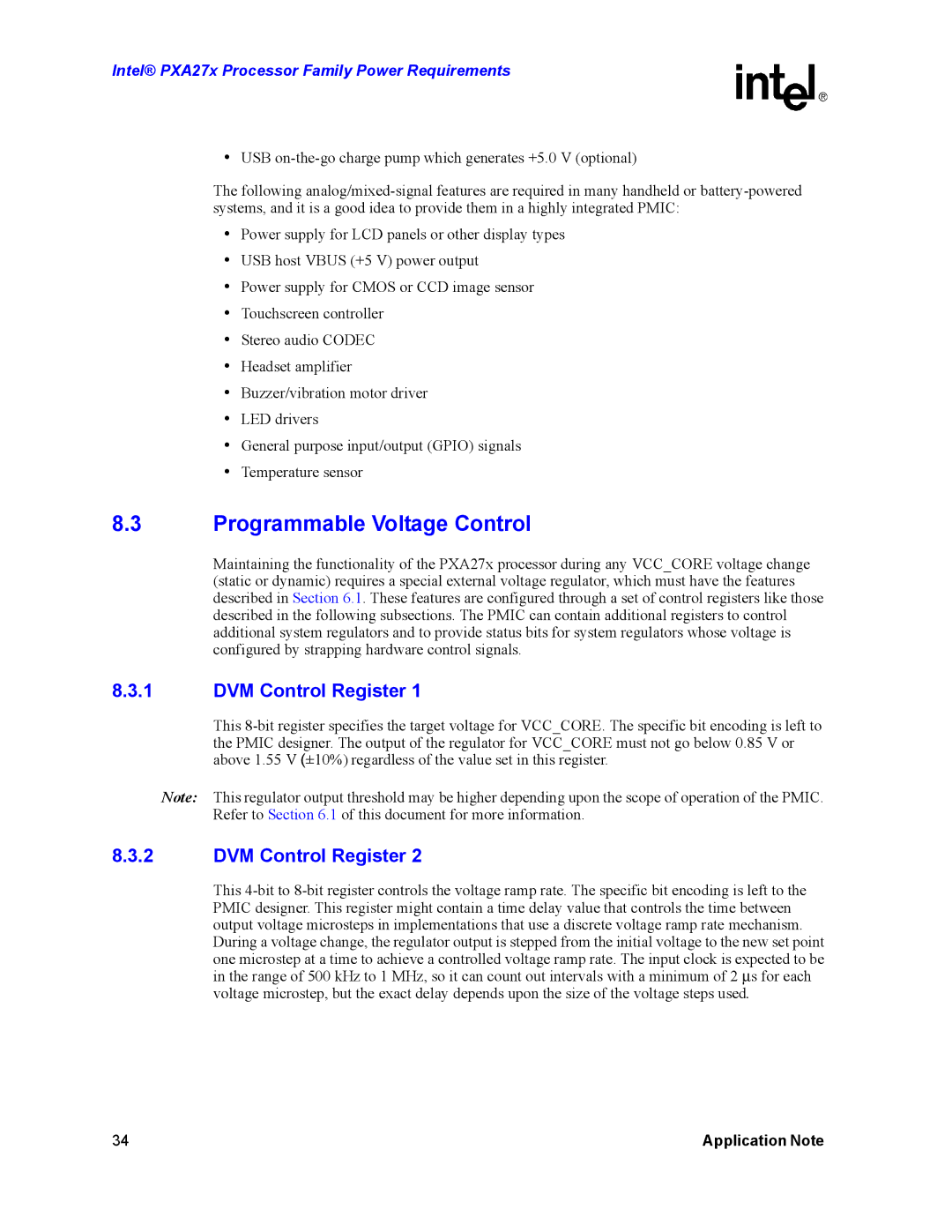Intel® PXA27x Processor Family Power Requirements
•USB
The following
•Power supply for LCD panels or other display types
•USB host VBUS (+5 V) power output
•Power supply for CMOS or CCD image sensor
•Touchscreen controller
•Stereo audio CODEC
•Headset amplifier
•Buzzer/vibration motor driver
•LED drivers
•General purpose input/output (GPIO) signals
•Temperature sensor
8.3Programmable Voltage Control
Maintaining the functionality of the PXA27x processor during any VCC_CORE voltage change (static or dynamic) requires a special external voltage regulator, which must have the features described in Section 6.1. These features are configured through a set of control registers like those described in the following subsections. The PMIC can contain additional registers to control additional system regulators and to provide status bits for system regulators whose voltage is configured by strapping hardware control signals.
8.3.1DVM Control Register 1
This
Note: This regulator output threshold may be higher depending upon the scope of operation of the PMIC. Refer to Section 6.1 of this document for more information.
8.3.2DVM Control Register 2
This
34 | Application Note |
